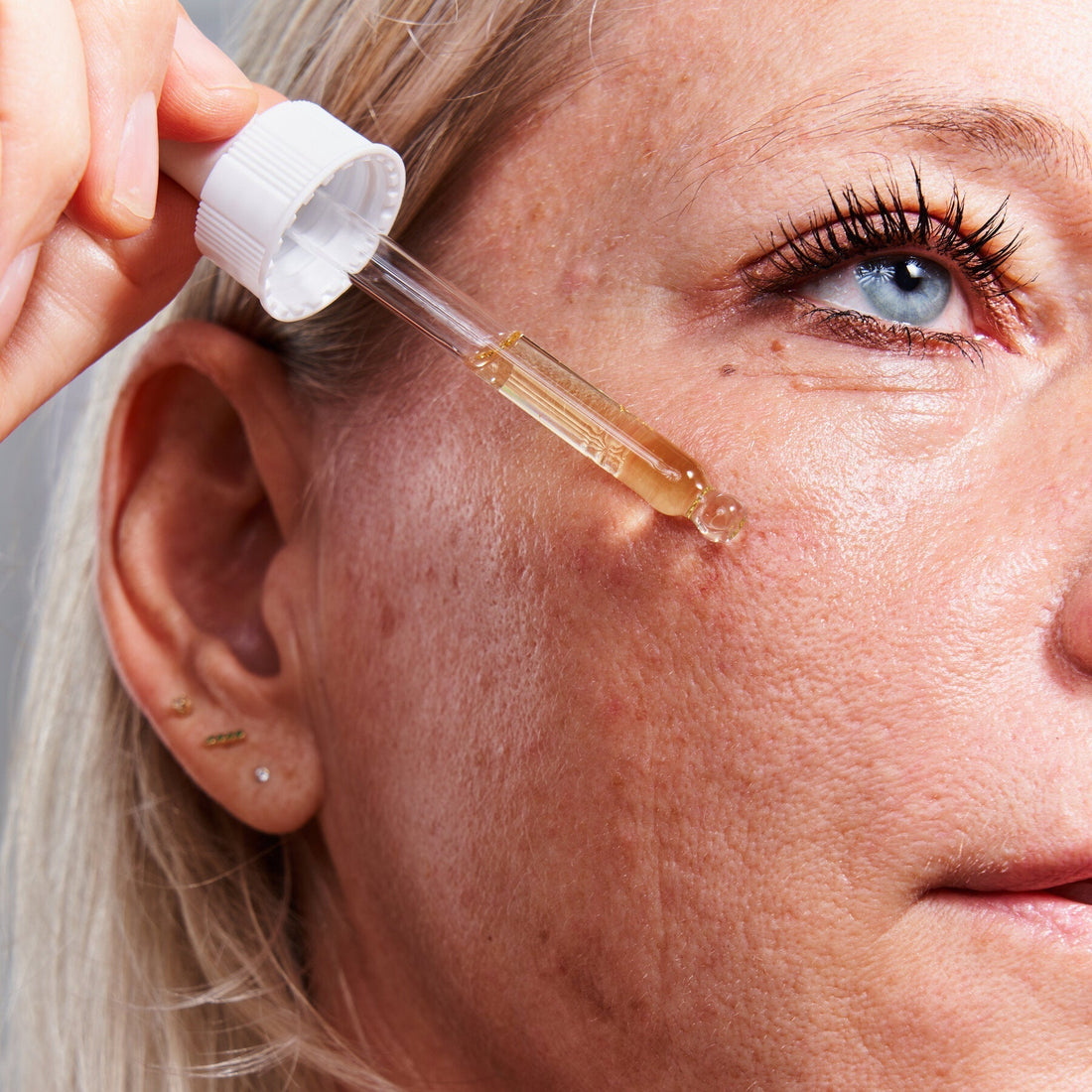To wrap up our retinol series before I move on to other skincare ingredients, I want to leave you with one final piece of advice—the kind that ties everything together. If you’ve been following along, you know that retinol is one of the most searched ingredients in the world of skincare—and for good reason. This powerhouse ingredient is a form of vitamin A that works at a cellular level to improve the appearance of your skin. From softening fine lines and reducing dark spots to smoothing out uneven skin tone and clearing acne-prone skin, the benefits of retinol are no joke. It’s the miracle ingredient that’s been in your beauty arsenal since way before last year’s trending list.
(You can find more on what it does in my blog, What Does Retinol Actually Do For Your Skin.)
But here’s the catch: while retinol can be a total game-changer, improper use often leads to adverse reactions like skin irritation, dryness, or a compromised skin barrier. And most of the time, it comes down to just a few common mistakes.
Let’s break down 4 of the biggest retinol mistakes I see as an esthetician—and how to get the best results with your retinol product (without the frustration).

1. Spot Treating Instead of Applying to the Entire Face
If you’re only applying your retinol serum to breakout-prone areas or places where you see fine lines, you’re not getting the full benefits of retinol. This is one of the most common mistakes I see in my clinic.
Retinol doesn’t just treat visible acne, sun damage, skin aging, or fine lines—it helps improve your skin’s overall tone and texture by speeding up skin cell turnover and supporting the production of new cells across the entire face.
Why this matters: This powerful ingredient works to exfoliate the surface layers of the skin while penetrating deep enough to stimulate collagen production. When you only apply it to a small area, you're limiting its ability to enhance your overall complexion.
Fix it: If you are using a prescription retinol, use a pea-sized amount of retinol and gently apply it in an even layer across your full face—avoiding sensitive areas like the corners of your nose, mouth, and eyes. If you have dry skin or sensitive skin, try buffering with a light moisturizer or hyaluronic acid underneath. If you are using the Skin+ Daily A Retinol Serum, use a 1/2 dropper full and apply all over your face, avoiding the under eye area.
Follow our routine protocol in number 3 below.
2. Giving Up Too Soon
Let’s be real—the beauty industry has conditioned us to expect overnight results from skincare products. But with topical retinoids, patience is your best friend. And really, that goes for all active ingredients in your skincare regime.
Most people experience mild irritation or dryness during the first week, and that’s totally normal—it’s part of the process (I explain that in more detail here).
Here’s why: Retinol is an active ingredient that works at the cellular level. It takes time to visibly improve fine lines, dark spots, and rough texture. Many people give up right when their skin is starting to adjust.
Fix it: Stick with it. Consistent use over 8–12 weeks is what gives you that long-term glow—and about 4–5 weeks to see improvement in acne. Start slow—use it alternate nights or 2–3x per week at first to build tolerance. Results won’t happen overnight, but they will happen.
Bonus: If you experience dry skin, redness, or flaking, layer your retinol over a hydrating serum with hyaluronic acid (like our HylaVera Gel Moisturizer) and always follow with a gentle cleanser (like our Pro B5 Wash) and a nourishing moisturizer. Proper hydration supports your skin barrier and lowers the risk of irritation.
3. Applying Retinol at the Wrong Time in Your Routine
The order of your skincare routine seriously matters when using a potent ingredient like retinol. Applying it after heavy creams or occlusives can block absorption. Layering it with other active ingredients like mandelic acid, glycolic acid, salicylic acid, or benzoyl peroxide—especially without guidance—can increase your risk of irritation.
What you need to know: Retinol should be applied to clean, dry skin. If your skin is still damp from cleansing, it can increase absorption—and with that, irritation. On the flip side, applying retinol too late in your routine (like after occlusive creams) can block absorption and reduce effectiveness.
Okay, I already know someone’s going to say, “Wait, you told me to apply it to damp skin!” And yes—I do tell some of you to apply it to damp skin. But that’s because I’m targeting deeper penetration for specific acne treatments. If you’re not working directly with a skincare professional, your safest bet is to stick with dry skin application.
Fix it: Stick to this simple night time skincare regime:
-
Gentle cleanser (Pro B5 Wash)
-
Optional: soothing toner or hydrating mist
-
Retinol serum (Daily A)
-
Gel moisturizer or lightweight hydrating serum (HylaVera)
-
Optional: benzoyl peroxide if you have inflamed acne or a non-pore clogging moisturizer (Acne Gel)
Also, avoid combining retinol with too many other active ingredients. Save your vitamin C and exfoliating acids for your morning or alternate night routine. This minimizes the risk of irritation and helps maintain a healthy skin barrier.
4. Applying Retinol Too Close to the Eyes
The skin around your eyes is thinner and more delicate than the rest of your face. It’s also more prone to irritation, dryness, and flaking—especially when exposed to potent ingredients like retinol.
Why this matters: Using too much retinol or applying it too close to your eyes can lead to redness, tightness, or peeling in that sensitive area. It may also cause watering or stinging, particularly at the outer corners where the skin creases.
Fix it: Keep retinol away from the orbital bone. When applying your retinol serum, use gentle dabbing motions with your ring finger and avoid the under-eye area and eyelids. If you want to address fine lines around your eyes, look for an eye cream that contains a lower-strength, eye-safe retinoid.
Final Thoughts
The biggest con of retinol isn’t the ingredient itself—it’s the misinformation around how to use it. By avoiding these common retinol mistakes, you’re setting your skin up for real, lasting change.
Whether you’re using a non-prescription retinoid like retinyl palmitate, or a prescription form like retinoic acid, the rules are the same: start slow, stay consistent, and don’t skip hydration.
Understand your skin type, build your retinol routine accordingly, and always wear SPF during the day—even on cloudy days—since retinol can make your skin sun sensitive.
And remember, not all retinol-laced products are created equal. If you’re overwhelmed by different types of retinoids or need help choosing the right formula for your skin condition, our team at Skin+ can help. In the meantime, I discuss the different conversions of each retinol here.


